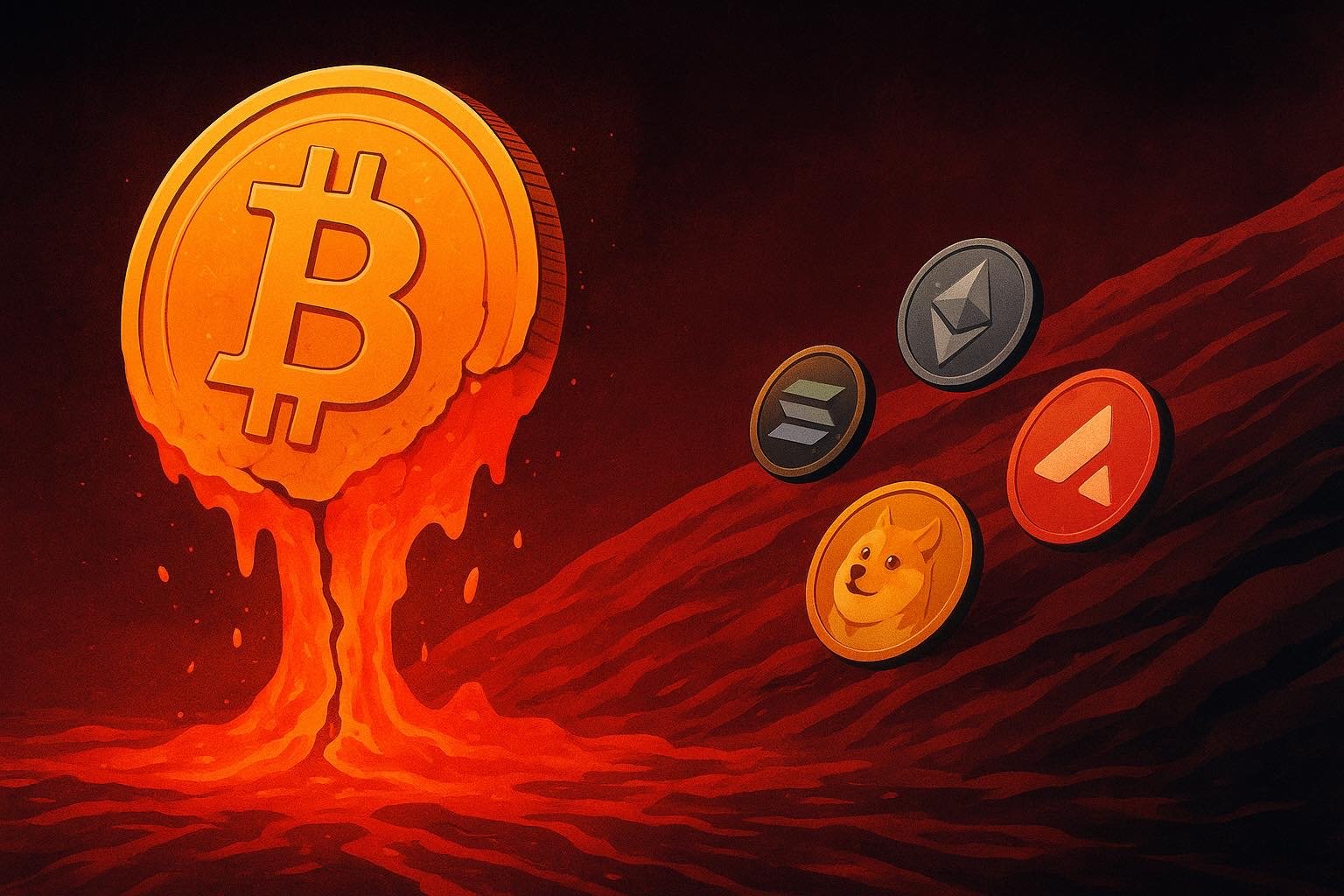When the crypto market started crashing on October 10 and 11, Binance users noticed right away that something was wrong. Orders weren’t going through, charts were freezing, and some people couldn’t even log in. It wasn’t just one or two reports either, it was all over X and Telegram within minutes.
A few traders said their stop-losses didn’t trigger at all. Others said prices were delayed or moving in strange ways. During a crash that sharp, a few seconds can make a big difference, so frustration spread fast.
Binance later confirmed that its systems were struggling with what it called “high load.” Basically, there was too much activity hitting the servers at once. According to the company, the main issues lasted from about 20:50 to 22:00 UTC on October 10.
That short period was enough to cause a mess. People holding Ethena’s USDe stablecoin saw their balances fall quickly when it lost its dollar peg. The sudden drop triggered forced liquidations for thousands of accounts, which made the selling even worse.
Once traders realized the peg had slipped, panic set in. The situation was fixed not long after, but a lot of people were already out of their positions by then.
Binance Announces Compensation Plan
Binance posted a statement the next day admitting the problems and announcing a compensation plan. The exchange said it would reimburse users who lost money because of technical errors, like the USDe depeg, but not for regular market moves.
It also said payouts would be handled automatically within 72 hours.
Executives Richard Teng and Yi He both apologized publicly and said the company’s risk and system teams were reviewing everything that happened to prevent a repeat.
Still, not everyone was satisfied. Some traders said communication during the crash was poor and that Binance’s policy didn’t cover enough people. They argued that accounts were frozen, orders didn’t go through, and stop-losses failed, all problems outside a trader’s control.
Ethena USDe Depeg
The chaos centered around Ethena’s USDe, now the third-largest stablecoin by market cap.
Stablecoins are supposed to stay pegged to the US dollar, usually at a 1:1 ratio. When they fall too far below that level, people panic.
USDe briefly dropped under $0.90, which set off a wave of liquidations. WBETH and BNSOL were also hit hard.
The selling triggered by those liquidations put even more pressure on Binance’s systems. One event fed into another until the platform simply couldn’t keep up.
Why You Shouldn’t Leave Coins on Exchanges
This whole thing is a reminder of something most crypto traders already know but sometimes forget. When you leave your coins on an exchange, you don’t really control them. If that exchange goes down, or even just freezes for a few hours, you’re stuck.
A self-custody wallet avoids that risk. Holding your own keys means you always have access to your crypto, no matter what happens to an exchange.
Exchanges are great for buying and selling, but not for storage. The old saying still applies, “not your keys, not your coins.”
The Binance outage showed exactly why that matters. The market can swing in any direction, but you should never lose access to your own money. That alone explains why self-custodial tools like Best Wallet that provide full financial autonomy and privacy are becoming more critical than ever.
Best Wallet’s self-custodial, Fireblock-backed architecture ensures that users remain in control of their private keys, and no one except them can access their funds. Fireblocks, for instance, splits user private keys into two using an MPC technology, eliminating any point of failure that hackers can exploit while keeping all assets insured.
This state-of-the-art security system is further reinforced by its no-KYC stance, allowing investors to manage their assets without external oversight. Therefore, it is possible to store, buy, swap, stake, and trade Bitcoin and other cryptocurrencies on the app without jumping through the hoops of identity verification. This approach alone eliminates the risk of data breaches commonly seen with centralized exchanges.
An additional benefit of using Best Wallet is that it features a full suite of trading tools, tailored to help investors maximize their returns in the upcoming bull cycle. One of the most popular among them is the Upcoming Tokens tool, which lets investors buy high-potential pre-launch tokens without having to navigate multiple interfaces.
More so, unlike chain-specific wallets, Best Wallet supports multiple blockchains, amplifying its appeal among those looking to keep a large, diverse portfolio. The goal is to support up to sixty blockchains, and the team has already made significant progress by integrating major networks like Bitcoin, Ethereum, Binance Smart Chain, Polygon, Solana, and Base. What this means is that users won’t have to create multiple wallets to access tokens from different blockchains.
Combined with other key aspects like cross-chain swaps, portfolio management, iGaming perks, staking perks, fiat payment, and more, it’s hardly surprising that analysts at 99Bitcoins – a leading crypto YouTube channel with over 720k subscribers – are calling Best Wallet the best option for investors.
Download Best Wallet
This article has been provided by one of our commercial partners and does not reflect Cryptonomist’s opinion. Please be aware our commercial partners may use affiliate programs to generate revenues through the links on this article.
